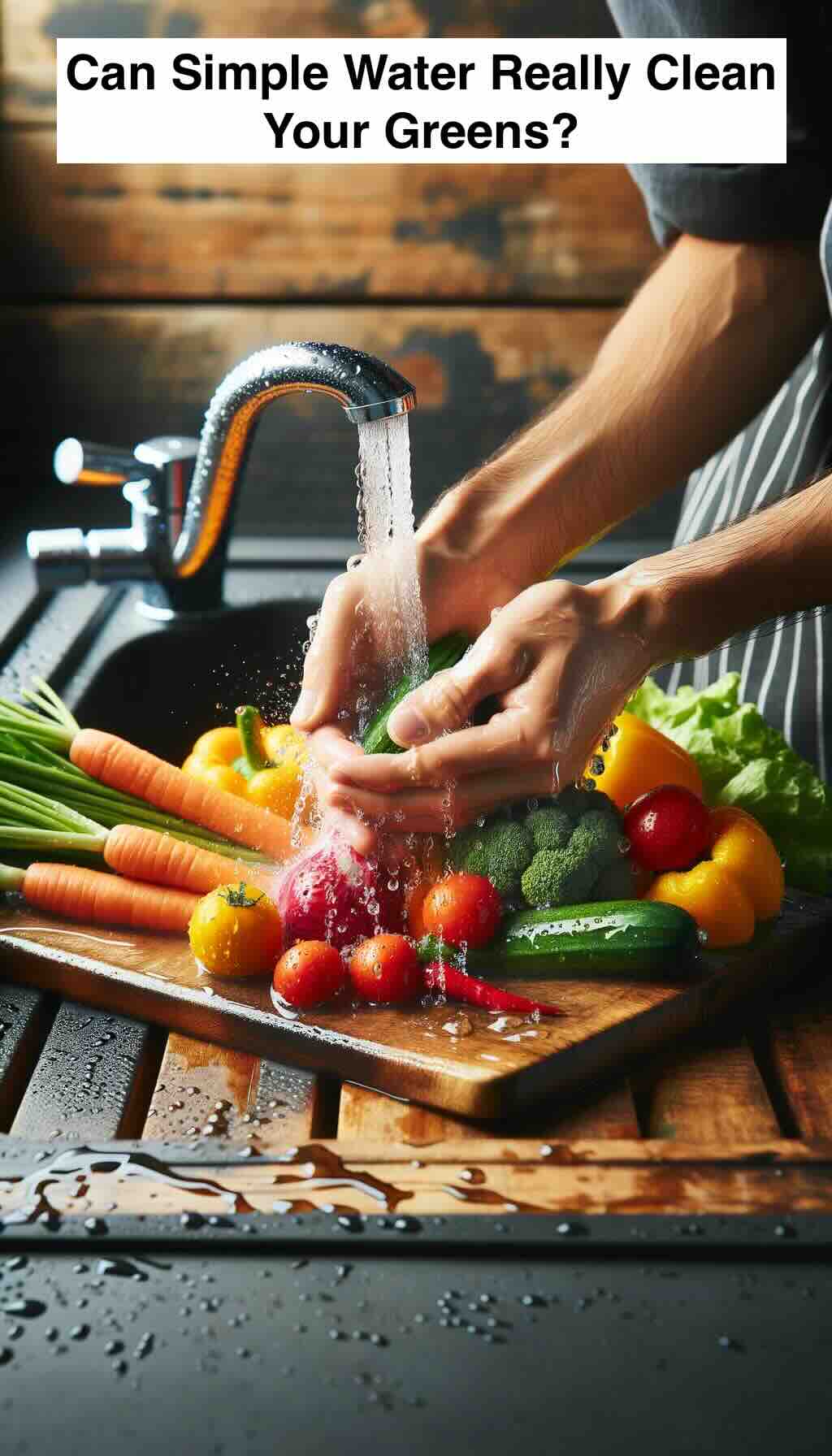
In today’s health-conscious world, the importance of washing fruits and vegetables cannot be overstated. With recent studies shedding light on the most effective methods to remove pesticides and harmful bacteria, it’s time to revisit our kitchen routines. This guide dives deep into the latest findings, offering you practical, science-backed advice on keeping your produce safe and clean.
Why Wash Your Produce?
First off, let’s address the elephant in the room: pesticides. Designed to protect crops from pests and diseases, these chemicals can linger on your fruits and vegetables. While they’re crucial for agricultural productivity, their residue poses potential health risks, making thorough washing a must for any health-savvy individual.
The Science of Clean: What Research Says
Recent studies have revolutionized our understanding of produce washing. Here’s what the science says:
1. Water Works Wonders: Simple yet effective, running water remains your best bet for removing surface dirt and reducing pesticide levels. The mechanical action of rubbing produce under water helps dislodge unwanted residues more than any commercial cleaner.
2. Baking Soda Solution: A groundbreaking study from the University of Massachusetts, Amherst, highlighted the effectiveness of soaking produce in a baking soda solution (about 1 teaspoon of baking soda per 2 cups of water) for 12-15 minutes. This method proved remarkably efficient in breaking down pesticide residues, especially on apples.
3. Vinegar and Salt: Another home remedy that has gained traction is the use of vinegar and saltwater solutions. While not as potent as the baking soda method, it offers a decent alternative for those looking for natural cleaning options.
4. Commercial Washes: While convenient, commercial fruit and vegetable washes are not necessarily more effective than plain water. Research suggests that these products do not significantly lower pesticide residue compared to the baking soda method or even just water alone.
5. Peeling and Trimming: When in doubt, peeling fruits and vegetables can remove pesticides present on the outer layer. However, this also means losing valuable nutrients and fiber. For leafy greens, removing the outermost leaves can reduce contaminant exposure.
Practical Tips for Your Kitchen
Implementing these findings is easier than you think. Here are some actionable tips to incorporate into your daily routine:
– Make a Baking Soda Soak: For hard-skinned produce like apples and pears, a 12-15 minute soak in a baking soda solution can significantly reduce pesticide levels.
– Rinse Under Running Water: For items like berries and leafy greens, a gentle but thorough rinse under cold running water can do the trick.
– Use a Brush: For produce with tough skins, using a clean brush under running water can help remove residues from nooks and crannies.
– Dry with a Clean Cloth: After washing, drying your produce with a clean cloth or paper towel can remove any remaining pesticides.
Conclusion: Clean Eating Starts with Clean Washing
Armed with the latest scientific findings and practical knowledge, you’re now equipped to tackle pesticide residues head-on. Remember, the goal isn’t to eliminate every single molecule of pesticide – that’s both impractical and unnecessary. Instead, focus on significantly reducing your exposure through effective washing techniques, ensuring that your fruits and vegetables are as safe and nutritious as possible. Here’s to clean eating that’s backed by science!
10 FAQs on “Pesticide Panic: Can Simple Water Really Clean Your Greens?”
1. Do I need to wash organic produce?
Yes, organic produce should also be washed to remove natural pesticides and environmental contaminants.
2. Can washing remove all pesticides from produce?
While washing significantly reduces pesticide residues, it may not remove them entirely. Peeling or using a baking soda soak can further reduce exposure.
3. Is it safe to use soap on fruits and vegetables?
No, it’s not recommended to use soap, detergent, or commercial produce washes. These can leave residues. Stick to water, baking soda solutions, or vinegar rinses.
4. How long should I wash fruits and vegetables?
A thorough rinse under running water for at least 30 seconds is effective. For tougher pesticides, a 12-15 minute soak in a baking soda solution is advised.
5. Should I wash produce with a peel?
Yes, washing produce with a peel is important to remove contaminants before peeling. This prevents transferring residues from the peel to the flesh when cutting.
6. What’s the best way to dry produce after washing?
Use a clean cloth or paper towel to gently pat the produce dry. This can also help remove any remaining contaminants.
7. Can vinegar remove bacteria from produce?
Vinegar can help reduce bacteria and pesticide residues, but it’s not more effective than a baking soda soak or simply using water
8. How can I wash leafy greens effectively?
Soak leafy greens in a bowl of cold water for a few minutes, then rinse them under running water. A salad spinner can help dry them efficiently.
9. Is there a difference in washing technique for soft vs. hard produce?
Yes, soft fruits like berries can be gently swirled in a cold water bath, whereas hard produce like apples should be washed under running water and can be scrubbed with a brush.
10. What should I do if I accidentally wash produce with soap?
Rinse the produce thoroughly under running water to remove any soap residues. Consuming soap can cause digestive discomfort.
Blog Tags
produce washing, food safety, pesticide removal, healthy eating, kitchen tips, organic produce, food preparation, baking soda cleaning, vinegar rinse, produce hygiene









